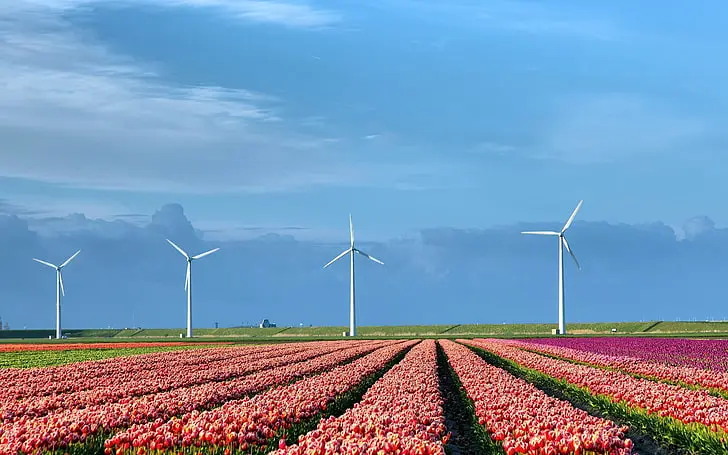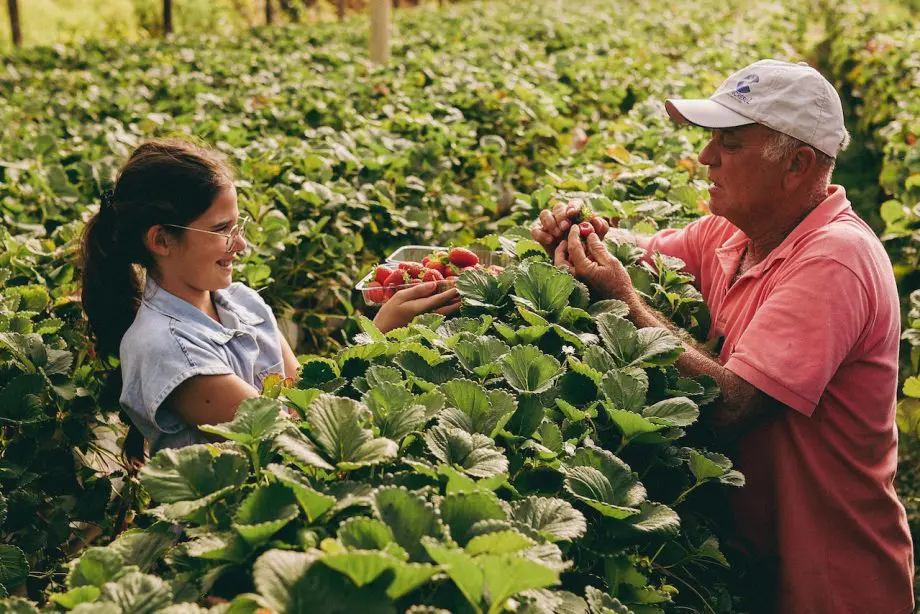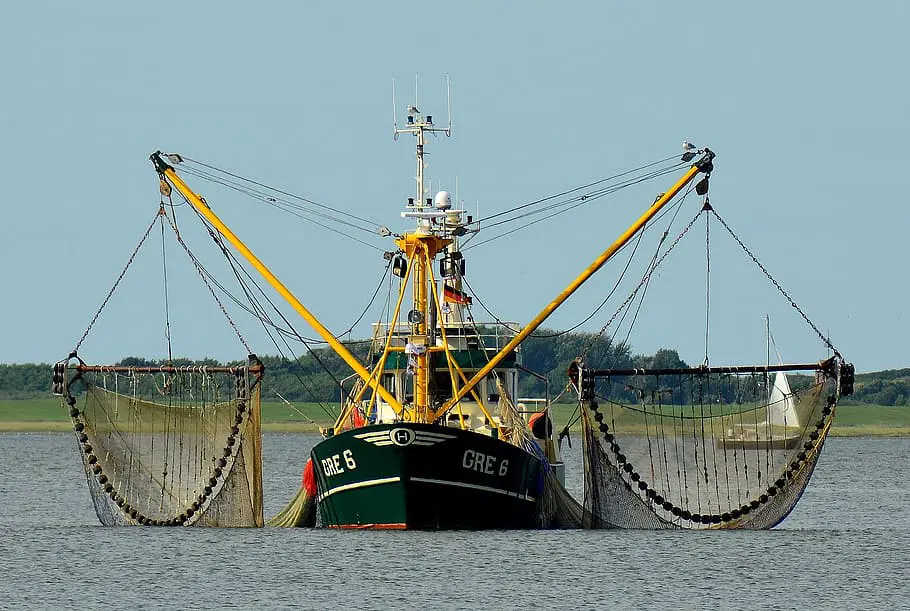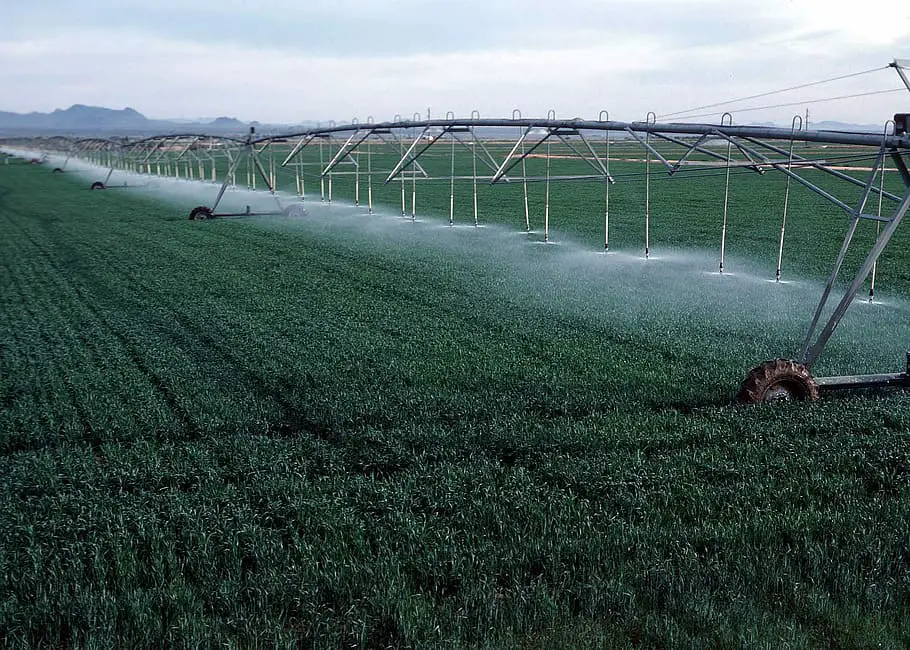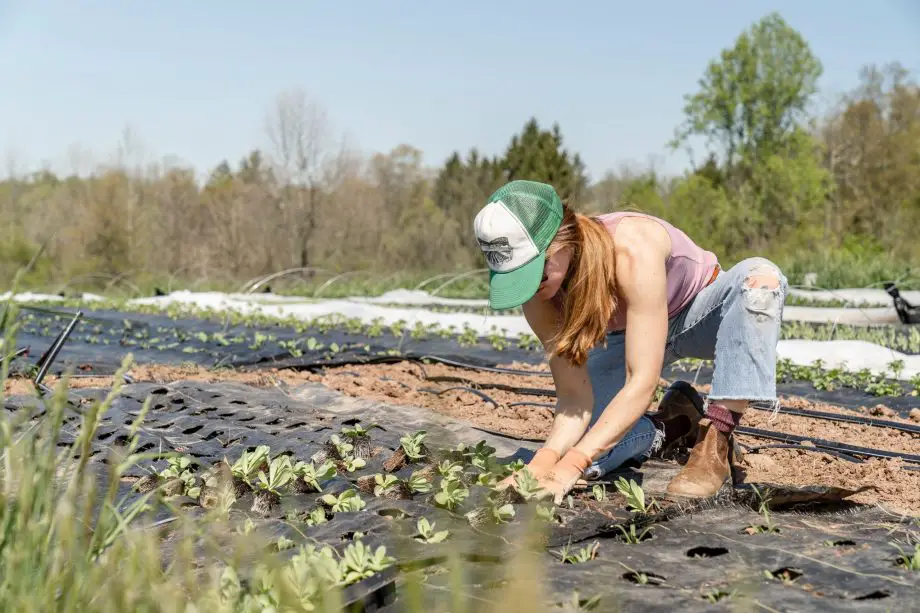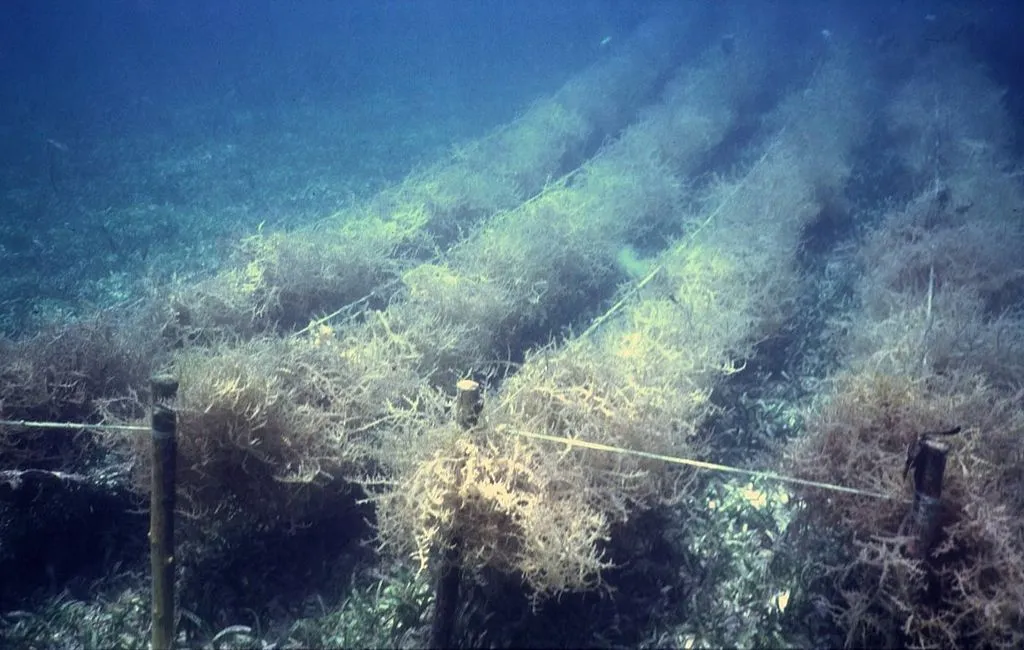
Kelp Farming isn’t just about underwater growth; it’s about pioneering the future of sustainability.
Join us as we dive deep into how this incredible form of aquaculture is turning the tides towards healthier oceans and a greener planet.
Kelp Farming Key Takeaways:
- Kelp Farming significantly impacts sustainable marine agriculture by enhancing biodiversity, sequestering carbon, and improving water quality.
- This form of seaweed aquaculture offers a viable solution to ecological challenges while supporting coastal economies and promoting environmental stewardship.
Kelp Farming 101: How Seaweed Aquaculture Changes the Game
Ever wondered how kelp farming could revolutionize our approach to environmental challenges?
Dive into the world of seaweed aquaculture, where the humble seaweed isn’t just an underwater plant, but a game changer in battling climate change and restoring marine health.
Join us as we explore how these aquatic farms are not just growing seaweed—they’re growing solutions!
Seaweed Farming: A Green Revolution Underwater
As we all look for ways to live more sustainably, discover how this traditional method is getting a fresh twist, offering not just food, but also great benefits for our environment.
Seaweed farming, or kelp farming, isn’t just about underwater gardening; it’s a pivotal strategy in today’s environmental playbook.
Seaweed aquaculture stands at the forefront of combating climate change and supporting biodiversity by absorbing carbon and revitalizing marine ecosystems.
Here, we’ll explore how growing seaweed can transform our world.
Let’s dive into how these verdant underwater farms are making waves in ecological restoration!
Kelp Farming An Overview
Seaweed farming or kelp farming is the practice of cultivating and harvesting seaweed. In its simplest form farmers gather from natural beds, while at the other extreme farmers fully control the crop’s life cycle. https://en.wikipedia.org/wiki/Seaweed_farming
A summary of important points from Wikipedia
-
Key Seaweed Species Cultivated:
- Eucheuma and Kappaphycus alvarezii used for carrageenan.
- Gracilaria used for agar.
- Saccharina japonica, Undaria pinnatifida, Pyropia, and Sargassum fusiforme mainly consumed after minimal processing.
-
Seaweed Characteristics:
- Photosynthetic algal organisms.
- Non-flowering.
-
Top Seaweed Producers (2022):
- China: 58.62%
- Indonesia: 28.6%
- South Korea: 5.09%
- Philippines: 4.19%
- Others: North Korea, Japan, Malaysia, Zanzibar (Tanzania), and Chile.
Table for Seaweed Production by Region
| Region | Contribution to Global Production | Notable Features |
|---|---|---|
| Asia | Dominant, over 90% of production | Favorable climate, advanced techniques, high demand |
| North America | Minimal, but growing | Increasing interest in sustainable aquaculture |
| Europe | Modest, focused on niche markets | High-quality seaweed for specific industrial applications |
| South America | Emerging, with notable potential | Expanding through initiatives in countries like Chile |
This table details the contributions and characteristics of seaweed production across different global regions.
Seaweed Production Stats:
-
Global Seaweed Production Overview (2022):
- Total Production: Over 35.82 million tonnes, showing substantial growth from previous years.
- Primary Method: Dominantly cultivation-based, moving away from wild harvesting.
- Leading Regions: Asia leads with China, Indonesia, and the Philippines at the forefront.
- Regional Advantages: Favorable climates and advanced farming techniques contribute to high production volumes.
-
Applications of Seaweed:
- Human Consumption: A staple in various diets, especially in Asian countries.
- Agriculture: Used for soil health enhancement as an organic additive.
- Biotechnology: Contributes to the development of biodegradable products.
- Energy Sector: Emerging as a source of biofuels.
-
Further Reading and Details:
- For additional insights and data on global seaweed production and applications, the FAO’s detailed report can be explored here.
Table for Applications of Seaweed Across Industries
| Industry | Application | Benefits |
|---|---|---|
| Food & Nutrition | Dietary products, snacks | High in minerals, vitamins, and antioxidants |
| Agriculture | Organic fertilizers | Enhances soil fertility and plant health |
| Biotechnology | Development of biodegradable plastics | Reduces environmental impact |
| Energy | Production of biofuels | Provides a renewable energy source |
This table illustrates how seaweed is utilized in various industries and the benefits of its applications.
Seaweed Production Stats Table
This table provides a structured overview of the significant growth in seaweed production, emphasizing its diverse applications across various industries.
| Category | Details |
|---|---|
| Total Production (2022) | Over 35.82 million tonnes |
| Production Method | Primarily through cultivation, not wild harvesting |
| Leading Regions | Asia, with China, Indonesia, and the Philippines leading |
| Regional Advantages | Favorable climates and advanced farming techniques |
| Applications | – Human Consumption: Essential in various diets, especially in Asia |
| – Agriculture: Used as organic soil enhancer | |
| – Biotechnology: Helps develop biodegradable products | |
| – Energy: Used in biofuel production | |
| Further Reading | FAO’s Detailed Report on Seaweed Production |
This table provides a structured overview of the significant growth in seaweed production, emphasizing its diverse applications across various industries.
-
- Seaweed farming is carbon-negative.
- Potential significant role in climate change mitigation.
- Advocated by IPCC, World Wildlife Fund, Oceans 2050, and The Nature Conservancy for expanded cultivation and further research.
The Ecological Benefits of Kelp Farming
Seaweed farming isn’t just an underwater venture; it’s a crucial ally in our fight against environmental issues.
This green practice offers a variety of ecological benefits that help sustain our planet’s health. Here’s how seaweed farming is making a difference:
- Carbon Sequestration:
- Seaweed farms play a critical role in capturing atmospheric CO2, potentially mitigating the impacts of climate change.
- Biodiversity:
- Research indicates that seaweed farms provide vital habitats, enhancing marine biodiversity by supporting a variety of marine species.
- Nutrient Bioextraction:
- These farms help remove excess nutrients from water bodies, which improves water quality and reduces problems like eutrophication.
- Coastal Protection:
- Kelp forests act as natural barriers, dissipating wave energy and reducing coastal erosion, thus protecting shorelines from the damaging effects of storms and waves.
Each of these points highlights how seaweed farming contributes to a healthier planet, demonstrating its value beyond just an agricultural practice.
The Many Uses of Seaweed: A Versatile Marine Resource

Seaweed is not just an underwater plant; it’s a versatile resource with a wide array of uses that benefit various industries.
From food to fuel, seaweed’s applications are diverse and impactful. Let’s explore the many ways seaweed is utilized across different sectors.
-
Food and Nutrition:
- Seaweed is a staple in many diets, particularly in Asian cuisines. It’s packed with vitamins, minerals, and antioxidants, making it a nutritious choice for meals and snacks.
-
Agriculture:
- Used as an organic fertilizer, seaweed enhances soil health by adding vital nutrients, which helps increase crop yields.
-
Health and Beauty:
- In the cosmetic industry, seaweed extracts are used in products like creams and lotions due to their hydrating properties and rich mineral content.
-
Biotechnology:
- Researchers are exploring the use of seaweed in biotechnological applications, including the development of biodegradable plastics and pharmaceuticals.
-
Energy:
- Seaweed is being developed as a source of biofuel. Its ability to grow quickly and not compete with food crops for land makes it an appealing option for renewable energy.
This section highlights how seaweed is much more than just an element of marine life; it’s a key player in sustainable practices across various industries.
Economic Impacts of Seaweed Farming
Seaweed farming isn’t just eco-friendly; it’s also an economic booster. Here’s how this growing industry is making waves in local and global markets:
-
Job Creation:
- Seaweed farming offers abundant employment opportunities, especially in coastal communities. It not only creates direct farming jobs but also opens up new roles in processing, distribution, and research sectors, often revitalizing local economies that may be struggling.
-
Product Diversification:
- The versatility of seaweed allows for a wide range of products:
- Food: Seaweed is a staple in many diets around the world, appreciated for its nutrition.
- Biofuels: As a sustainable energy source, seaweed biofuels are gaining traction.
- Pharmaceuticals: Extracts from seaweed are used in various medical products for their beneficial properties.
- The versatility of seaweed allows for a wide range of products:
These economic activities contribute significantly to the growth of sustainable practices while supporting community livelihoods and pioneering new market opportunities.
Innovative Uses of Seaweed in New Industries
Seaweed is breaking into new markets, offering sustainable alternatives in industries ranging from packaging to fashion.
This section delves into concrete applications that are currently in development or on the market.
-
Biodegradable Packaging:
- Companies like Notpla in the UK are pioneering the use of seaweed to create water-soluble and edible packaging solutions. These products are designed to decompose within weeks, presenting a viable alternative to single-use plastics.
-
Seaweed in Water Treatment:
- Seaweed’s natural absorption properties are utilized in biofilters for municipal and industrial wastewater treatment. These biofilters help remove toxic heavy metals and other pollutants from water, enhancing the ecological safety of water bodies.
-
Fashion and Textiles:
- The development of seaweed fiber for textiles is underway with innovations such as SeaCell, a fabric made from seaweed and wood cellulose, offering anti-inflammatory and moisture-regulating properties to clothing.
-
Construction Materials:
- Research into seaweed’s use in the construction industry includes its application as a sustainable insulation material. Known for its natural flame-retardant and moisture-resistant properties, seaweed insulation could revolutionize eco-friendly building practices.
These applications highlight seaweed’s versatility and its potential to contribute to sustainability in a variety of sectors, offering environmentally friendly alternatives to traditional materials.
Social Benefits of Seaweed Farming

Seaweed farming extends its benefits beyond the environment and economy, fostering significant social advancements.
Here’s how this sustainable practice supports and enriches communities:
-
Community Engagement:
- Seaweed farming deeply involves local communities, providing sustainable livelihoods that help maintain social structures. This engagement promotes social cohesion and community development, especially vital in underdeveloped regions where economic opportunities may be limited.
-
Women’s Empowerment:
- In regions like Tanzania, seaweed farming has become a critical pathway for women’s empowerment. It offers them a chance to contribute significantly to their family and community welfare, improving their social status and economic independence.
These social benefits highlight how seaweed farming not only supports ecological and economic growth but also plays a crucial role in building stronger, more resilient communities.
Challenges and Considerations of Seaweed Aquaculture
While seaweed farming is burgeoning as a sustainable practice, it’s not without its hurdles. Here are some key challenges and considerations that need addressing:
-
Environmental Concerns:
- Although largely beneficial, seaweed farming can have negative impacts, such as habitat disruption and the potential spread of invasive species. Careful management and regulation are required to mitigate these risks and ensure that the environmental footprint remains minimal.
-
Economic Risks:
- The financial viability of seaweed farming can be precarious, dependent on fluctuating market demands and the economic stability of the regions where it is practiced. Diversifying products and developing robust markets are essential to stabilize income for those involved in this industry.
These challenges require thoughtful strategies and policies to ensure that seaweed farming can be sustainably integrated into global agricultural practices.
Table for Challenges in Seaweed Farming
| Challenge | Details | Impact |
|---|---|---|
| Environmental Impact | Habitat disruption, invasive species | Potentially negative effects on local ecosystems |
| Economic Viability | Market fluctuations, high initial investment | Affects profitability and long-term sustainability |
| Regulatory Issues | Diverse and complex regulations | Can hinder expansion and operational efficiency |
This table summarizes the main challenges faced by the seaweed farming industry, detailing the issues and their potential impacts.
Climate Resilience of Seaweed Farming
As climate patterns shift globally, seaweed farming is evolving to adapt to changing marine conditions.
This section explores specific strategies being implemented to enhance the resilience of seaweed farming in the face of climate change.
-
Breeding for Environmental Tolerance:
- Researchers are developing seaweed strains that can thrive in variable temperatures and saline conditions. These genetically selected strains are crucial for maintaining yield stability as global sea temperatures rise.
-
Infrastructure Innovations:
- New farming structures designed to withstand extreme weather are being tested. These include deeper water installations that can avoid surface-level storm impacts and flexible anchoring systems that adapt to varying currents and wave heights.
-
Carbon Sequestration Efforts:
- Studies have quantified the carbon capture potential of different seaweed species, leading to targeted cultivation of the most effective sequestering types. This not only helps mitigate climate change but also enhances the carbon credit potential of seaweed farms.
-
Advanced Monitoring Systems:
- Implementation of IoT sensors and satellite imaging allows for real-time monitoring of seaweed farms. These systems help predict and mitigate the effects of environmental stressors by adjusting farming practices promptly.
These focused efforts are part of a broader strategy to ensure the sustainability and effectiveness of seaweed farming as environmental conditions evolve.
Future Outlook and Innovations in Kelp Farming
Seaweed farming is poised for transformative changes with continuous advancements and research. Here’s a look at what’s ahead:
-
Technological Advancements:
- Innovations in seaweed farming technology are enhancing productivity and scalability. Automated harvesting techniques, precision farming tools, and biotechnological improvements in seed quality are just a few developments helping seaweed farms expand their operations efficiently.
-
Research on Environmental Impacts:
- Ongoing research is crucial in understanding the broader environmental impacts of seaweed farming. Studies are examining everything from the carbon sequestration capabilities of seaweed to its effects on local ecosystems, which will help refine farming practices to be more sustainable and environmentally friendly.
These advancements indicate a promising future for seaweed farming, potentially making it a cornerstone of sustainable agriculture globally.
FAQs: Benefits of Seaweed Farming
Seaweed farming is gaining recognition for its substantial environmental and economic benefits. Here’s a closer look at some common questions about this sustainable practice:
Q: Why is seaweed farming good for the environment?
A: Seaweed farms are environmental powerhouses. They absorb carbon dioxide, reducing greenhouse gases in the atmosphere. Additionally, they enhance marine biodiversity by providing essential habitats for marine life and improve water quality by absorbing excess nutrients that can lead to harmful algal blooms.
Q: What are the economic benefits of seaweed farming?
A: Seaweed farming boosts local economies by creating jobs in coastal areas. It supports a range of industries from food and biofuel production to pharmaceuticals, expanding economic opportunities through diverse product development.
Q: Can seaweed farms save the world from climate change?
A: While not a silver bullet, seaweed farms contribute significantly to climate change mitigation. They absorb CO2 and can be used in carbon sequestration efforts, which help in reducing the overall carbon footprint.
Q: How does seaweed farming support local communities?
A: Seaweed farming provides sustainable livelihoods for local communities, particularly in coastal regions. It offers employment opportunities and has been a factor in economic development for underprivileged areas by introducing a stable, renewable resource.
Q: How does seaweed farming help the economy?
A: Beyond creating jobs, seaweed farming stimulates the economy through the production of a wide array of seaweed-based products. It encourages both local and international trade, which can be especially beneficial for developing economies.
Q: Can seaweed reverse climate change?
A: While seaweed alone cannot reverse climate change, its ability to sequester carbon makes it a valuable tool in the array of strategies needed to tackle global warming. It’s a promising natural method to help offset carbon emissions when combined with other environmental preservation and restoration efforts.
These insights show how integrating seaweed farming into modern agricultural practices and environmental strategies can provide multiple benefits across different sectors.
Conclusion: Seaweed Farming’s Bright Future
As we’ve explored the multifaceted world of seaweed farming, it’s clear that this practice holds substantial promise for sustainable development. With its considerable environmental, economic, and social benefits, seaweed farming presents a viable solution to several global challenges. However, as this sector grows, maintaining a balance between expansion and ecological sensitivity is essential.
Key Takeaways:
- Sustainability Champion: Seaweed farming excels as a sustainable practice, contributing positively to our environmental goals, such as carbon sequestration and biodiversity enhancement.
- Economic Booster: It stimulates economic growth by creating jobs and producing a variety of products, from biofuels to nutritional supplements.
- Community Benefactor: Locally, seaweed farming supports community development and women’s empowerment, especially in coastal and underdeveloped areas.
- Balance and Management: To maximize benefits and minimize ecological disruptions, careful management and regulatory oversight are crucial as the industry scales.
This conclusion not only reflects on the achievements and potential of seaweed farming but also reminds us of the importance of thoughtful expansion to ensure that its benefits can be enjoyed for generations to come.
Seaweed Aquaculture References
For those keen to delve deeper into the fascinating world of seaweed farming, the following resources offer comprehensive information and detailed insights. These authoritative sources have been instrumental in the creation of this blog post:
- Frontiers: You can access scholarly articles related to seaweed farming by searching for “seaweed farming environmental risks” or “economic stability in seaweed farming” on the Frontiers website, which publishes peer-reviewed research. Here
- Carymor Wales discusses the multifaceted benefits of kelp farming including its potential for sustainability, community economic boost, and environmental health. You can read more about their insights and initiatives here.
- UN Environment Programme (UNEP) offers a broad range of research and publications that explore the social and environmental impacts of seaweed farming. Although specific articles weren’t directly accessed, UNEP’s comprehensive resources on marine and coastal ecosystems provide valuable information that can be found on their official site here.
- ScienceDirect Seaweed farming: A perspective of sustainable agriculture and socio-economic development – ScienceDirect
These resources are instrumental for anyone looking to understand the comprehensive benefits and challenges associated with kelp and seaweed farming.

